Here’s how Northeastern intends to test all Boston students, faculty, and staff for the coronavirus
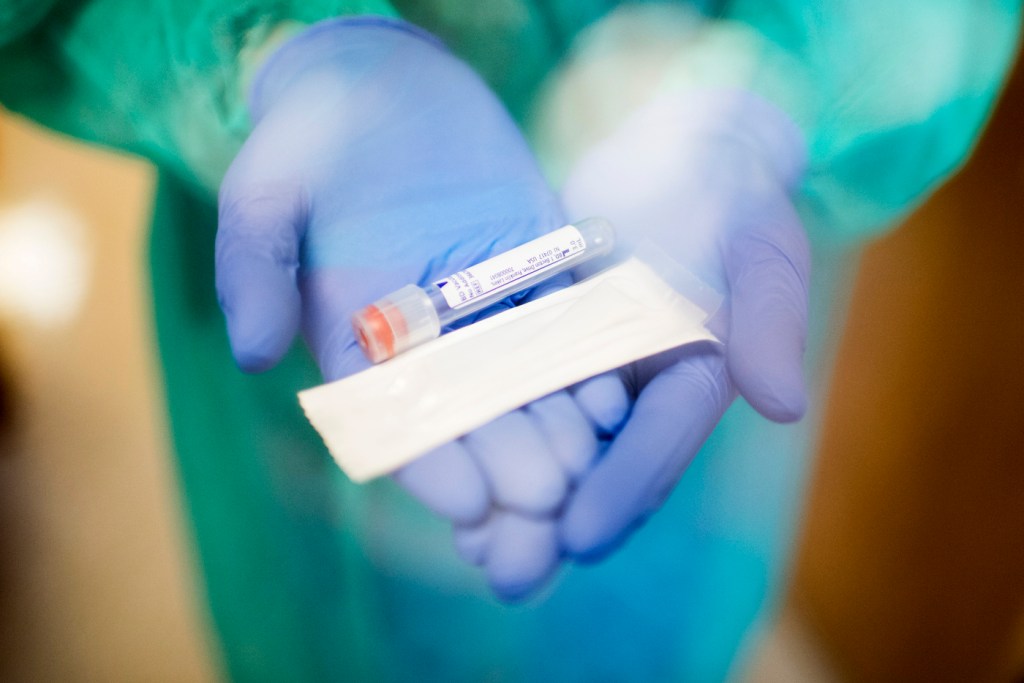
As students, faculty, and staff of Northeastern begin a phased return to the Boston campus, one of the integral components of ensuring the safety of everyone involved is testing for SARS-CoV-2, the coronavirus that causes COVID-19.
The university is providing free viral tests for students living on and off the Boston campus, as well as faculty, staff, and other employees, to determine if they are infected with the coronavirus, says David Luzzi, senior vice provost for research and vice president of Northeastern’s Innovation Campus.
“This testing is for everyone,” Luzzi says. “The goal here is to keep fully on top of what’s happening on campus.”
In the fall, testing will take place at the Cabot Physical Education Center on the Boston campus.
Participants will swab their nostrils themselves, under the direction of a clinical administrator, using an anterior nasal swab method. That is different—and more comfortable—than the nasopharyngeal swab, which involves inserting an elongated swab deep into the nose to the upper part of the throat.
Having participants swab their own nostrils reduces the risk of infection for healthcare providers, who won’t be in close contact with the participants. And, since it is less complex, it will also result in faster sampling.
The samples will be sent to a third-party testing facility and to Northeastern’s Life Sciences Testing Center, which is expected to clear inspections for state and federal licensing and be fully operational to test thousands of viral samples in late July.
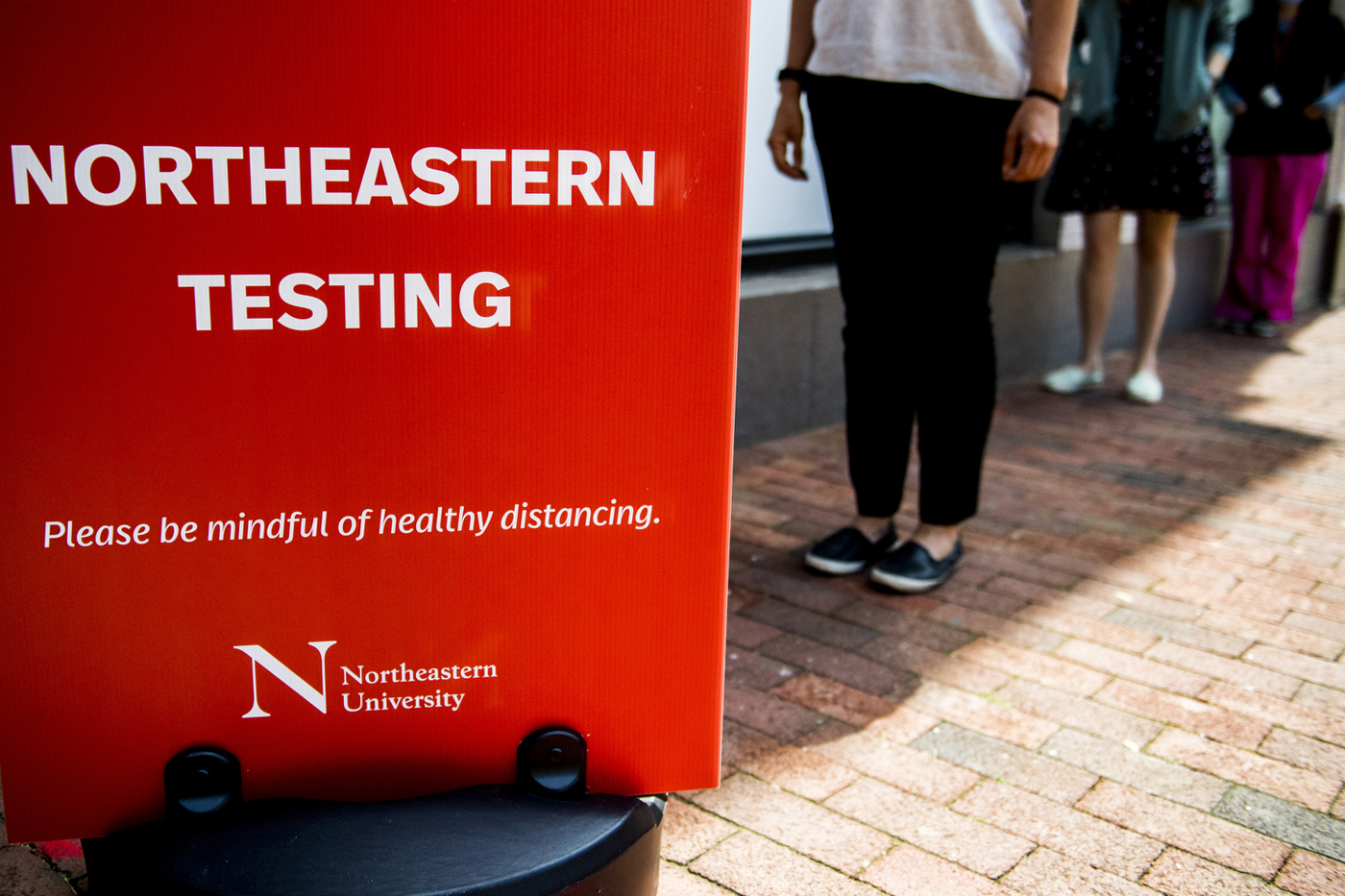
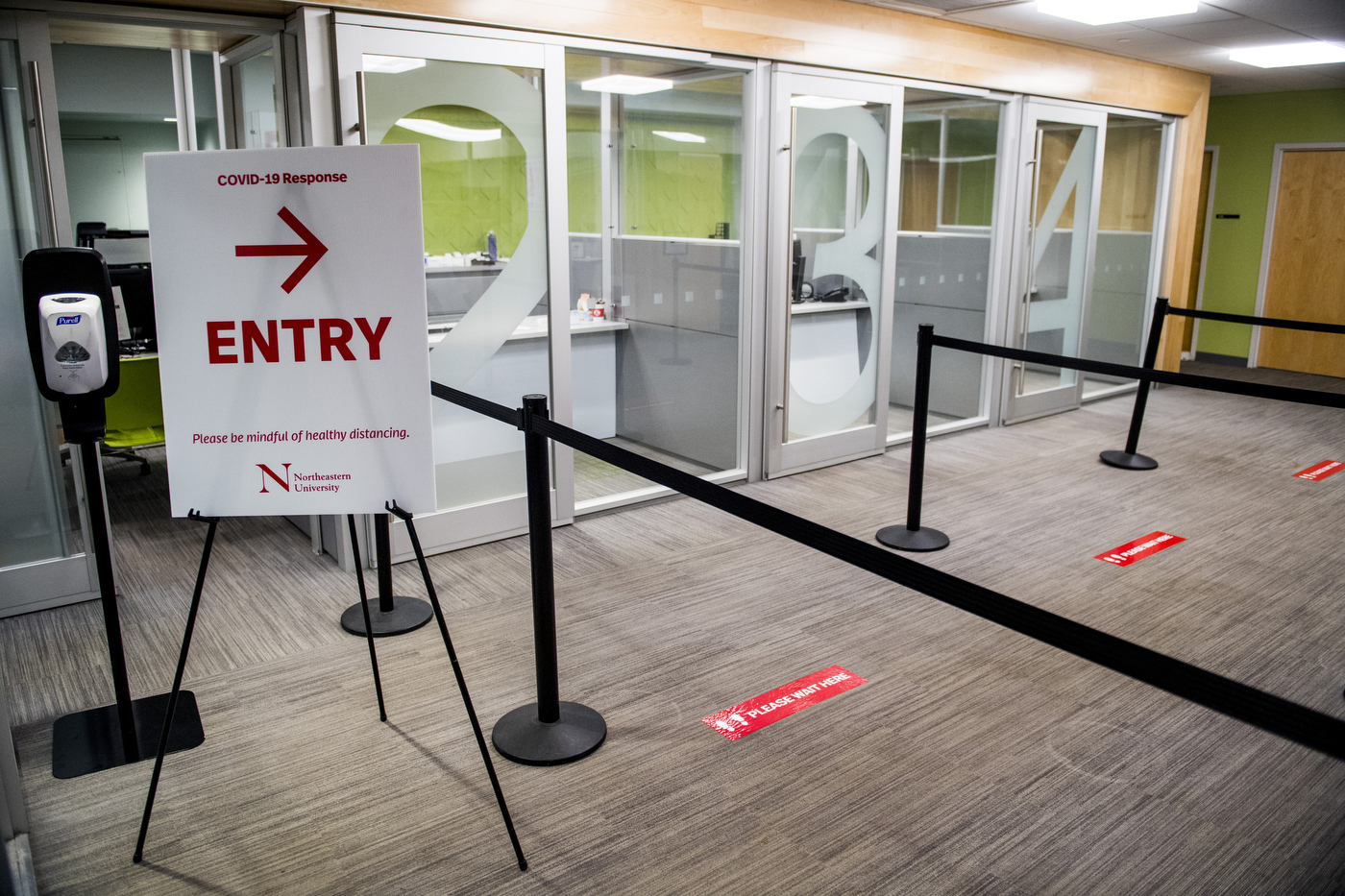
Both testing centers rely on what’s commonly called the gold standard for viral testing, Luzzi says, and will process the samples using a technique that relies on making millions of copies of the genetic material sampled within the swab to determine whether the coronavirus is present.
“It’s the same state-of-the-art technology that was used to map the human genome,” Luzzi says. “The university has built a testing facility that is, in terms of standards and technology, the best currently available for COVID testing.”
Results will be generated within 36 hours.
Members of the Northeastern community can expect for the self-administered swabbing to take about five minutes, Luzzi says.
Because one clinical administrator can help with up to three participants to conduct the swabbing, the process will enable large-scale testing on a daily basis, says Amaura Kemmerer, the associate dean for wellness and director of the Office of Prevention and Education.
“That kind of smart testing will be the same for students, faculty, and staff,” she says.
People who are experiencing symptoms of COVID-19 will be tested at a different facility. It’s a smaller site, with protections in place to conduct safe testing on symptomatic people, Kemmerer says.
This facility will more closely resemble a clinical testing facility, with personnel wearing full personal protective equipment. Also, although that experience will also involve the anterior nasal swabbing method, it will be administered by a clinician.
In order to conduct as many tests as quickly as possible, university administrators are considering several alternatives, such as setting up mobile testing options for different locations and ensuring testing sites are open at times that accommodate students and employees who don’t have traditional working schedules, Kemmerer says.
“We’re ramping up to be able to collect 5,000 samples a day, with the ability to go to higher numbers if needed.” Kemmerer says. “We’re looking at setting up a seven-day-a-week testing site with up to 10 hours of testing a day.”
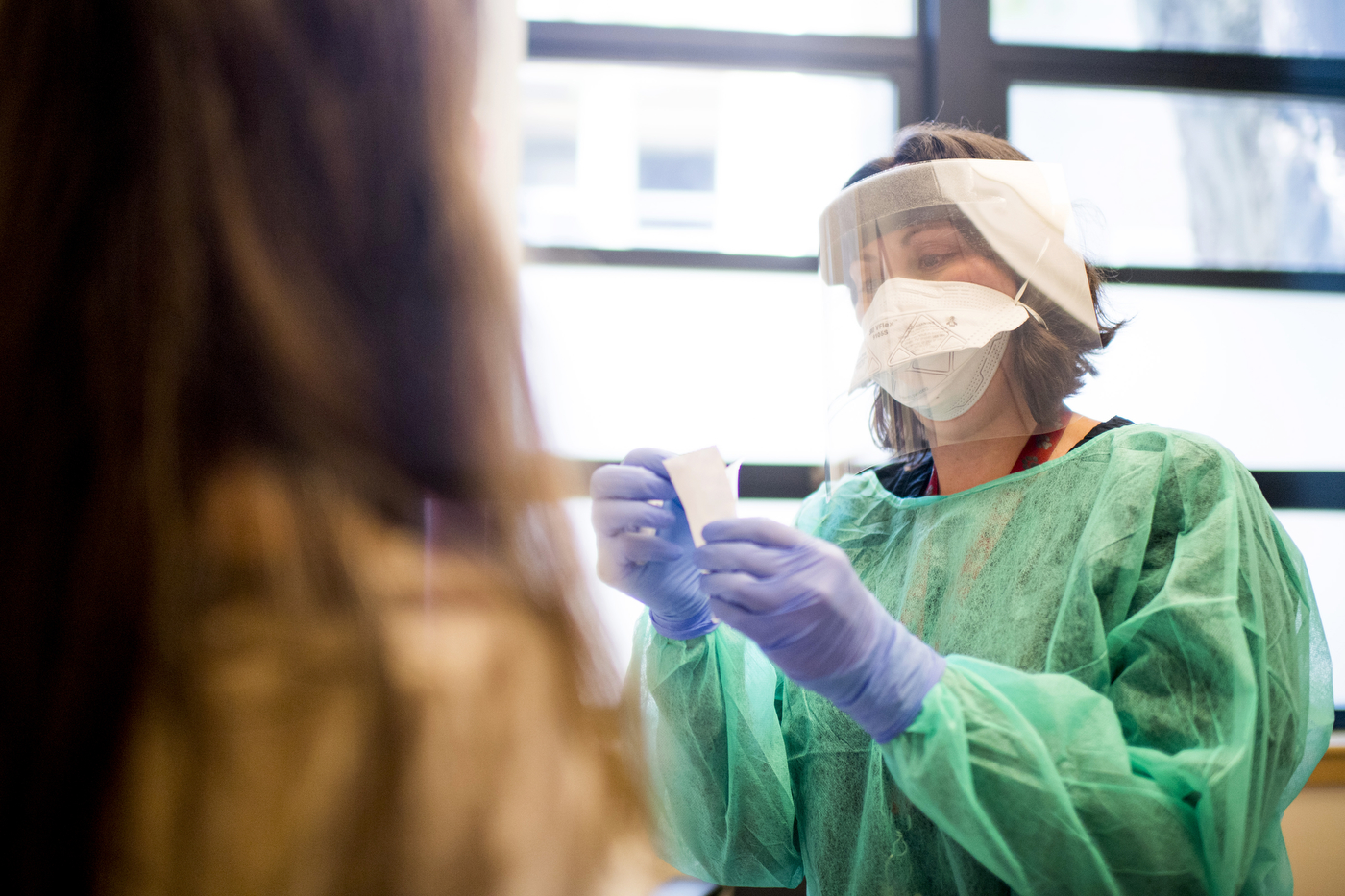
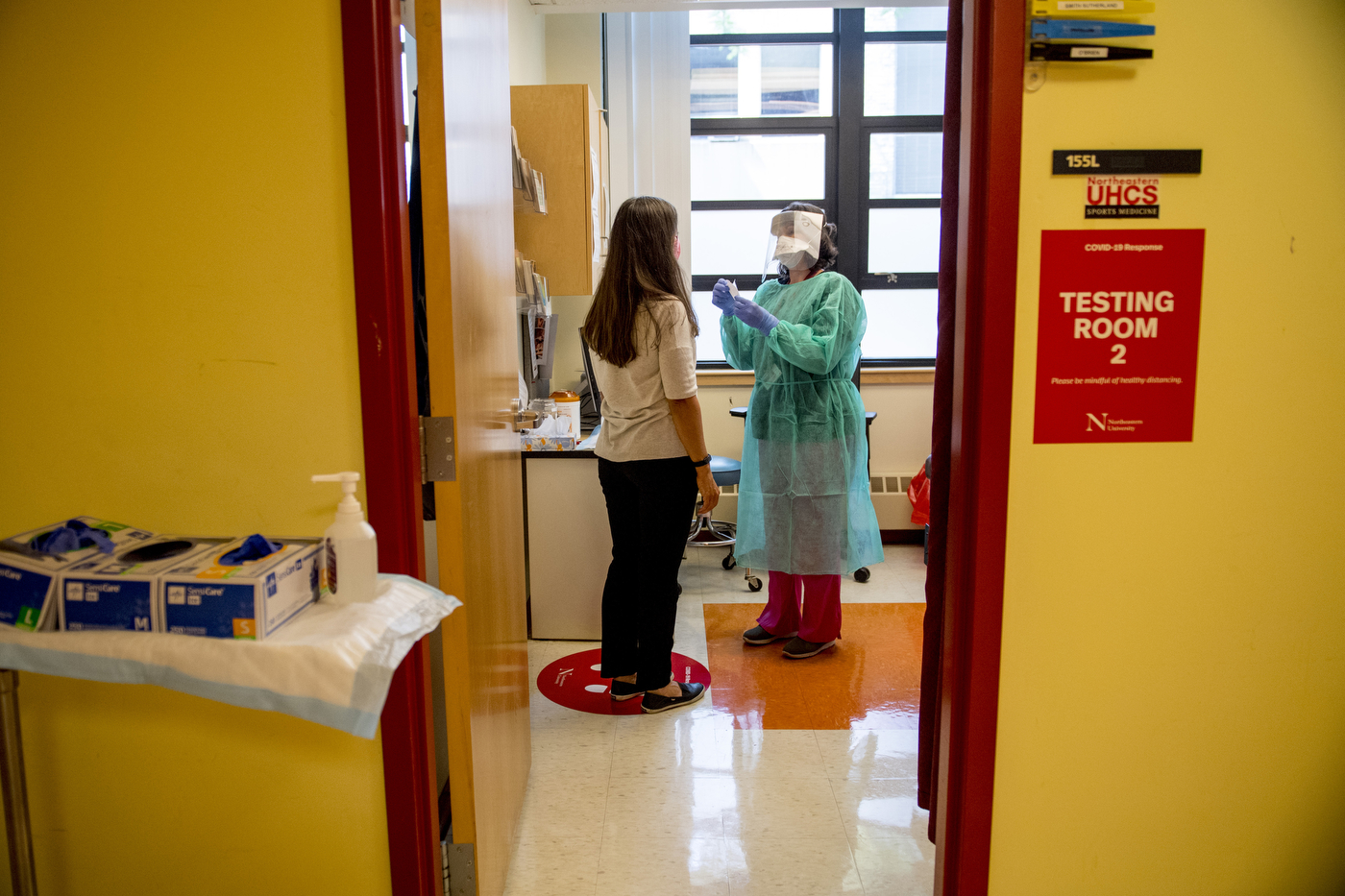
The free viral tests are required for everyone returning to the Boston campus. To get tested, students, faculty, and staff will need to sign up using an online form that will provide the necessary details and information for participants to get tested.
The success of accurately monitoring COVID-19 depends on testing the members of the Northeastern community regularly. A team of epidemiologists, data scientists, and university administrators have developed a model to assess how often people on the Boston campus will be required to get tested.
The number of days between each test will be informed by multiple variables, including the infection rates in Boston, as well as the average number of people a single person with a viral disease such as COVID-19 can infect.
The first cohort of people returning to the university included graduate students in the Bouvé College of Health Sciences, who began classes in person on June 30, as part of the Summer II term, as well as other students who are starting co-ops in July and who are allowed to live on campus.
Students currently residing on campus are living in single-occupancy units with private kitchens and bathrooms. Along with faculty and staff who have returned to campus, they are being tested during staggered dates between July 6 and July 20 at the facilities of Northeastern’s University Health and Counseling Services in Boston.
If students test positive for COVID-19, they will be asked to self-isolate for 14 days in their single-occupancy personal residence on campus. University staff will help students receive food deliveries and facilitate care and other needs during the quarantine period, says Madeleine Estabrook, senior vice chancellor of student affairs.
In the fall, students living on campus who test positive for COVID-19 will also be placed in single-occupancy isolation rooms on campus with a private bathroom, and food delivery assistance.
Students living on campus in the fall will be assigned housing arrangements that will have no more than two students per bedroom. Some, but not all, of those housing units will include private kitchens, and most will have shared bathrooms.
Students who become ill should coordinate with their instructors directly about their classwork.
Test results will be available through an online and private portal. These results will also be available to internal university staff who have been trained on protocols specific to Northeastern to manage the cases of infected people and work with local public health authorities to coordinate contact tracing, a method that attempts to minimize the spread of a disease by identifying and monitoring the physical interactions of an infected person with other people.
In all cases, whether it is people living on campus or off the Boston campus, or people who don’t have immediate access to primary care, Northeastern will offer an exhaustive list of resources to get treatment for COVID-19, Kemmerer says.
“If it’s a positive test, they will be hearing from a member of the university’s contact tracing team,” Kemmerer says. “If it’s a student, there will be an offer made from a medical provider at University Health and Counseling Services. If it’s the faculty or staff, that person will be directed to follow up with their primary care or their general practitioner.”
The plan, Kemmerer says, is to work with public health officials and that person who has tested positive to identify potentially affected areas on campus, such as classrooms or laboratories, where other people could have been exposed to the coronavirus.
“It sort of sets off this chain where, without compromising anybody’s personal health information, our staff will diligently follow up to make the appropriate alerts,” Kemmerer says.
The university’s contact tracing team also works closely with the commonwealth of Massachusetts and the Boston Public Health Commission, says Ken Henderson, chancellor and senior vice president of learning. When it comes to contact tracing, he says, everyone has a role to play.
“There’s a human element in this,” Henderson says. “It’s definitely relying on an individual being forthright, honest, and community-minded about ensuring that they share information about who they have close contact with—that’s of course in the interest of public health and the general interest of the community.”
Students who don’t test positive for COVID-19 are allowed to move freely around campus, but face masks must be worn at all times, including inside residence buildings. Students may remove their face masks once they are inside their individual rooms.
Everyone will be required to get tested within the first couple of days after arriving on campus, including students living on and off campus, as well as faculty and staff members. Then, everyone will need to get tested again after a certain number of days.
If someone decides not to get tested, that person will need to transition to a fully online learning experience, says David Madigan, provost and senior vice president for academic affairs. Members of the Northeastern community who prefer not to get tested will not be physically allowed on the Boston campus.
“We would ask that person to participate remotely, and from the point of view of the learning experience, we’re ready to do that with Hybrid NUflex,” Madigan says, referring to Northeastern’s newly introduced platform to enable virtual learning and teaching.
Northeastern’s administrators also emphasize that they have been working tirelessly to prepare the campus for a safe return.
“Our community’s health, safety and wellbeing are the highest priorities, and all planning has been with those priorities at the core,” Estabrook says. “This is thoughtful and thorough work to help make our campus safe.”
Emily Arntsen contributed to this report.
For media inquiries, please contact media@northeastern.edu.





